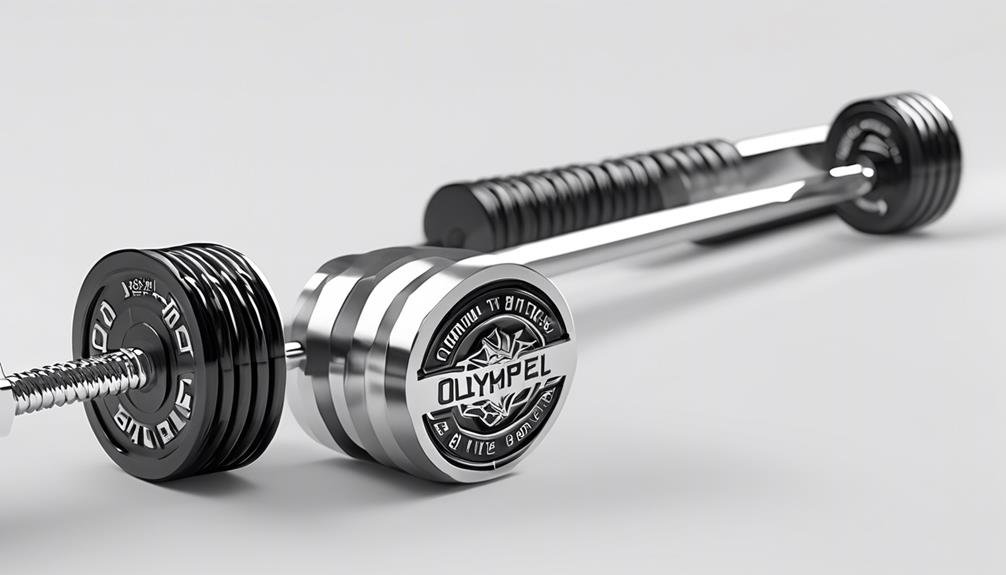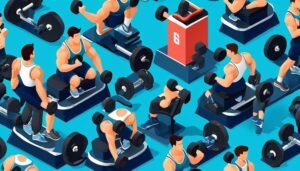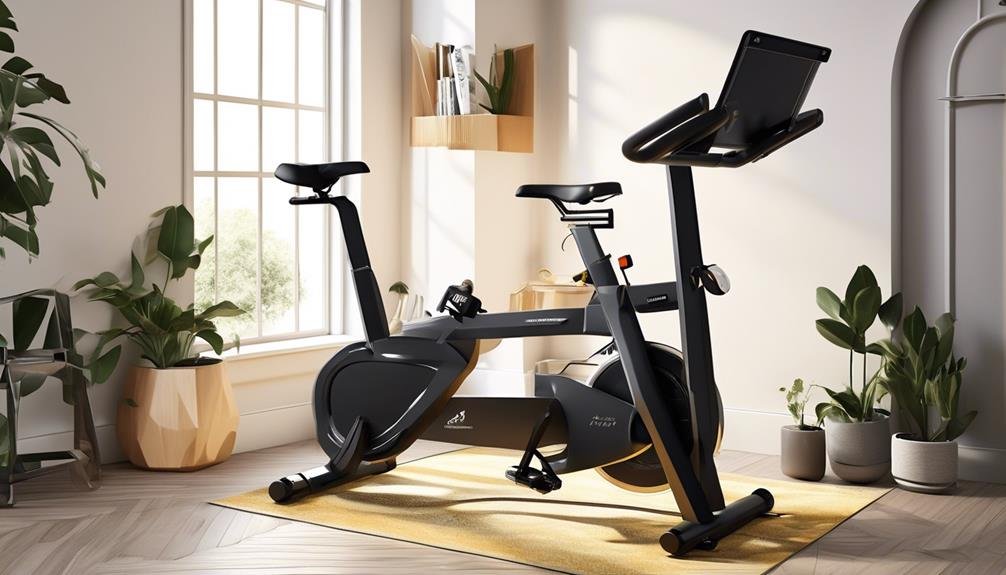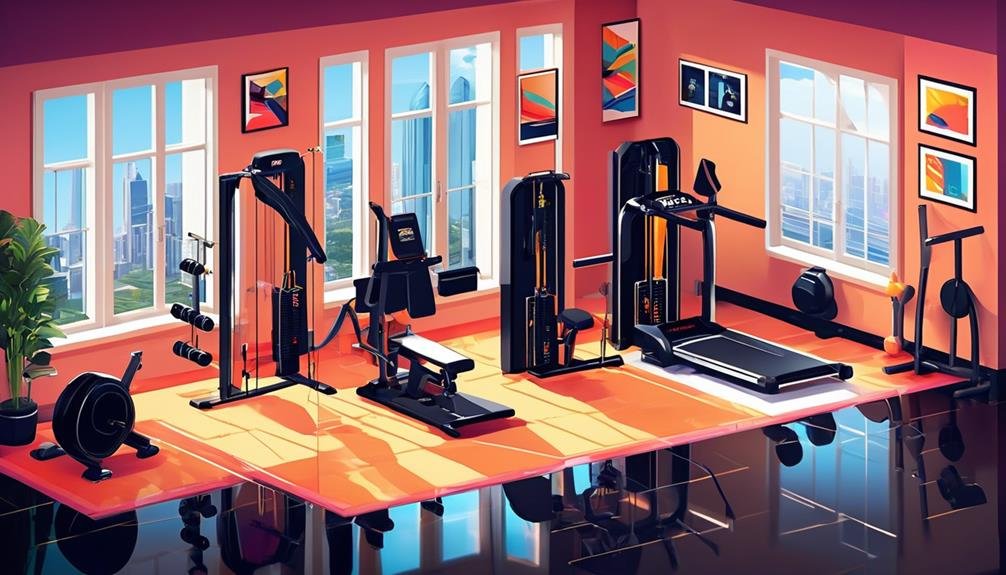When it comes to searching for the perfect Olympic barbell, you want to find the golden needle in the haystack, the barbell that will be your weightlifting companion through thick and thin.
But how do you separate the wheat from the chaff? What qualities should you be on the lookout for to ensure you're not left with a lackluster piece of equipment?
Well, my friend, let's embark on this journey together and uncover the secrets to finding a quality Olympic barbell that will elevate your lifting game to new heights.
Key Takeaways
- Consider the weight capacity of the Olympic barbell based on your own strength and goals.
- Choose the appropriate barbell length, such as a standard 7 feet or longer/shorter options depending on your body size and available space.
- Opt for a sleeve type made of stainless steel or chrome with smooth rotation using needle bearings or bushings.
- Look for a barbell with high-quality knurling that provides a secure grip without excessive discomfort.
Weight Capacity
When considering a quality Olympic barbell, one of the key factors to look for is its weight capacity. The weight capacity refers to the maximum amount of weight the barbell can handle without compromising its structural integrity. It's essential to choose a barbell with a weight capacity that meets your specific needs and goals.
The weight capacity of an Olympic barbell typically ranges from 700 pounds to over 1,500 pounds. It's crucial to assess your own strength and weightlifting goals to determine the appropriate weight capacity for you. If you're a beginner or focusing on lighter weightlifting, a barbell with a lower weight capacity may suffice. However, if you're an advanced lifter or plan to engage in heavy strength training, it's recommended to opt for a barbell with a higher weight capacity to ensure safety and longevity.
It is important to note that the weight capacity of a barbell is influenced by various factors, including the quality of the materials used and the design of the barbell. High-quality Olympic barbells are typically made from durable materials such as stainless steel or high-grade steel, which contribute to their ability to handle heavier loads.
Barbell Length
To ensure proper form and functionality, the length of a quality Olympic barbell is an important consideration. The standard length of an Olympic barbell is 7 feet, or 2.2 meters. This length allows for the barbell to comfortably fit on a weightlifting platform and provides ample space for loading weight plates. It also ensures that the barbell can be used for a variety of exercises, such as bench presses, squats, and deadlifts, without any limitations.
A 7-foot barbell is suitable for most individuals, regardless of their height or wingspan. However, if you're particularly tall or have a wider wingspan, you may want to consider a longer barbell. Some manufacturers offer barbells that are 7.2 or even 7.5 feet long, providing extra length to accommodate individuals with longer limbs.
On the other hand, if you have limited space or plan to use the barbell in a home gym, a shorter barbell may be more appropriate. Shorter barbells, typically measuring around 6 feet, are more compact and easier to store. They're also lighter, making them a good option for beginners or those who prefer a lighter weightlifting experience.
Sleeve Type
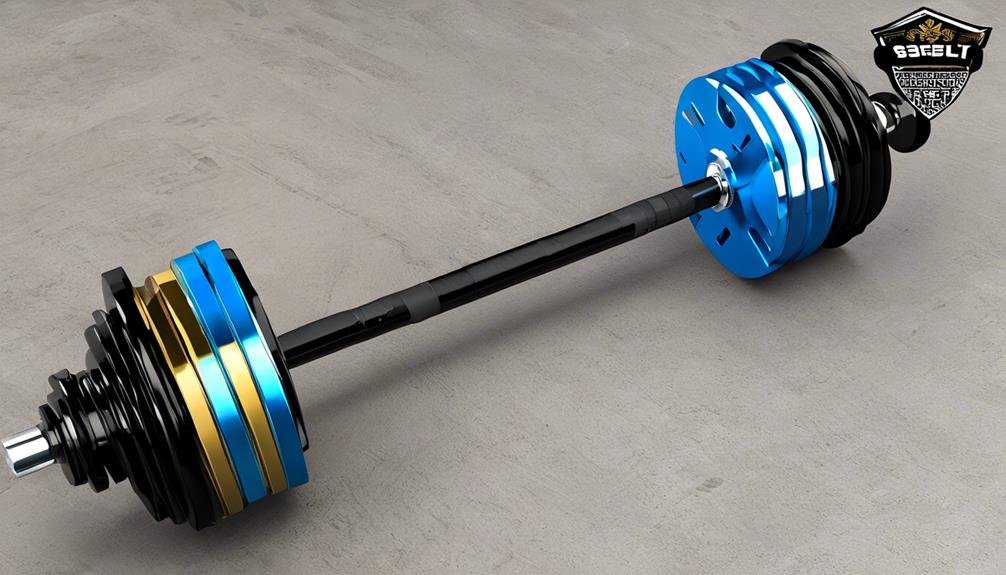
After considering the length of a quality Olympic barbell, the next important aspect to consider is the type of sleeves it has. The sleeves are the rotating ends of the barbell where you load the weights. The type of sleeve can greatly affect the performance and durability of the barbell.
Here are two key factors to consider when evaluating the sleeve type:
- Sleeve Material: Look for barbells with sleeves made from high-quality materials such as stainless steel or chrome. These materials provide excellent corrosion resistance, ensuring that your barbell will last for years to come. Avoid barbells with sleeves made from low-quality materials like plastic, as they're prone to cracking and breaking.
- Sleeve Rotation: Opt for barbells with smooth and efficient rotation in the sleeves. This allows the weights to spin freely, reducing the strain on your wrists and improving the overall lifting experience. Look for barbells with needle bearings or bushings, as these provide excellent rotation and durability.
Knurling
Knurling is an important feature to consider when selecting a quality Olympic barbell. It refers to the pattern of ridges on the barbell's grip area, which helps to provide a secure and comfortable grip during exercises. The knurling should be neither too aggressive nor too smooth, striking a balance between providing sufficient grip without causing excessive discomfort or pain.
When evaluating the knurling on a barbell, there are a few key factors to consider. Firstly, the depth of the knurling is important. It should be deep enough to offer a secure grip, especially when lifting heavy weights, but not so deep that it causes excessive abrasion or discomfort on your hands.
Secondly, the spacing between the ridges is also crucial. The knurling should be evenly spaced to ensure a consistent grip across the entire barbell.
Additionally, the quality of the knurling is essential. A well-made barbell will have knurling that's sharp and well-defined, allowing for better grip and control. On the other hand, poorly made barbells may have knurling that's uneven or shallow, making it difficult to hold onto the barbell securely.
Barbell Material
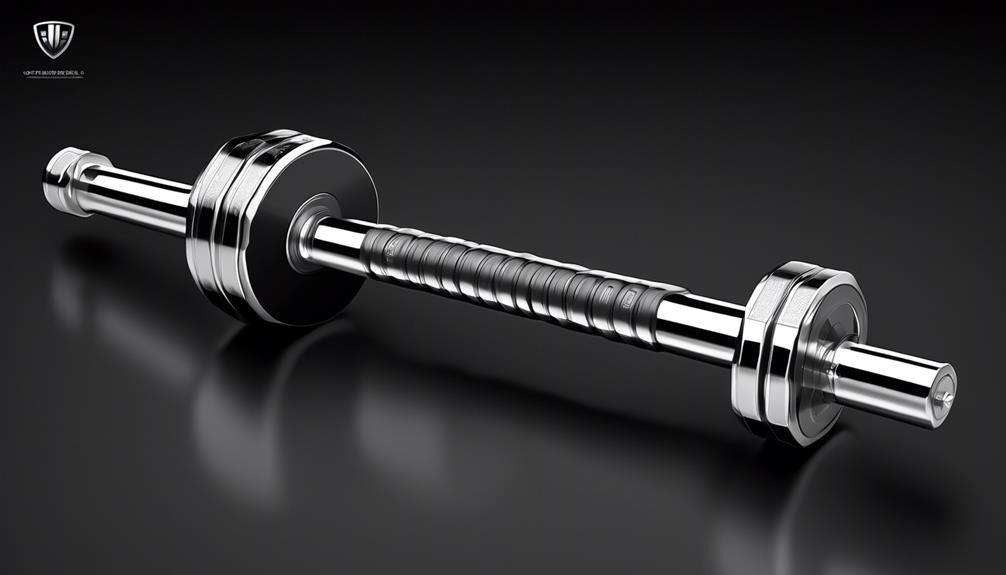
When selecting a quality Olympic barbell, one important factor to consider is the material of the barbell itself. The material plays a crucial role in determining the durability, performance, and overall quality of the barbell.
Here are some key points to keep in mind when evaluating the material of a barbell:
- Steel: Look for barbells made from high-quality steel, such as stainless steel or alloy steel. These materials offer excellent strength, corrosion resistance, and longevity.
- Stainless steel: Provides superior corrosion resistance, making it ideal for humid environments or outdoor use.
- Alloy steel: Offers a balance of strength and affordability, making it a popular choice for many lifters.
- Coating: Consider the coating applied to the barbell as it can impact both the durability and grip. Common coatings include chrome, black oxide, and cerakote.
- Chrome: Provides a smooth and shiny finish, but can be slippery without sufficient knurling.
- Black oxide: Offers good corrosion resistance and a slightly textured surface for improved grip.
- Cerakote: Known for its durability and corrosion resistance, it also provides a grippy surface without being too harsh on the hands.
Whip and Flexibility
To assess the quality of an Olympic barbell, it is important to evaluate its whip and flexibility. Whip refers to the ability of the barbell to store and release energy during lifts, while flexibility refers to the barbell's ability to bend and return to its original position. Both whip and flexibility are crucial factors that can greatly impact your lifting experience and performance.
Whip can enhance the speed and power of your lifts by allowing the barbell to "whip" upward, providing a kinetic boost. On the other hand, flexibility ensures that the barbell returns to a straight position after being bent, providing stability and control during lifts.
To help you understand the importance of whip and flexibility, here is a table summarizing the key aspects to consider:
| Whip | Flexibility |
|---|---|
| Enhances speed and power | Provides stability and control |
| Allows for kinetic boost | Ensures barbell returns to straight position |
| Impactful for explosive movements | Important for maintaining proper technique |
When evaluating the whip and flexibility of a barbell, it is essential to consider your individual lifting style and goals. Some lifters prefer a barbell with more whip for explosive movements such as Olympic lifts, while others may prioritize a stiffer barbell for powerlifting. Ultimately, finding the right balance between whip and flexibility will depend on your personal preferences and training needs.
Warranty and Customer Support
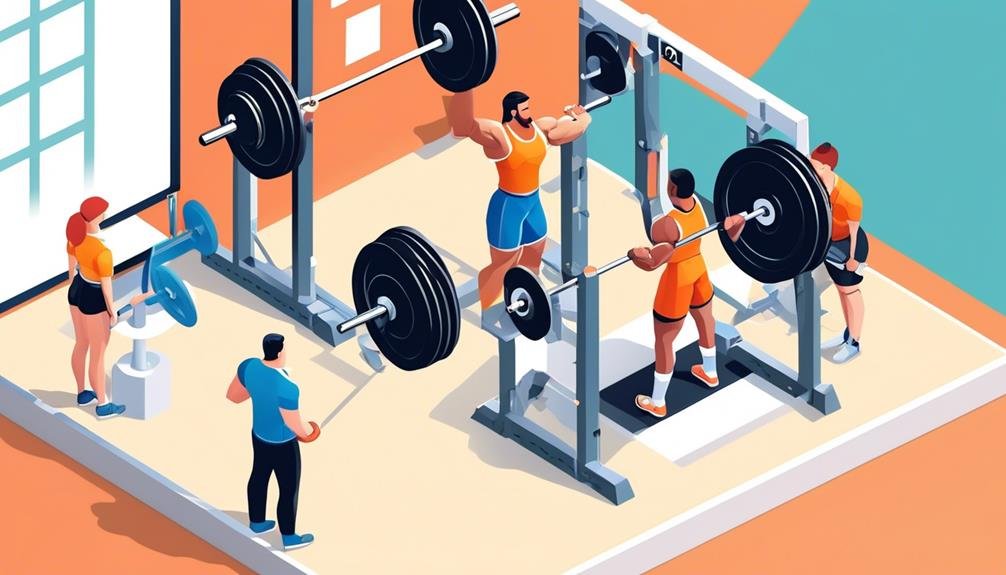
One important aspect to consider when choosing a quality Olympic barbell is the warranty and customer support provided. This ensures that you're protected in case of any manufacturing defects or issues that may arise during use. Here are a few key points to keep in mind when evaluating the warranty and customer support of a barbell:
- Warranty coverage: Look for a barbell that comes with a comprehensive warranty that covers manufacturing defects and damage during normal use. A longer warranty period is generally preferable, as it demonstrates the manufacturer's confidence in the product's quality.
- Customer support responsiveness: It's crucial to choose a barbell from a company that provides responsive and helpful customer support. This ensures that any inquiries or issues you may have will be promptly addressed, allowing you to have a smooth and satisfactory experience.
- Return policy: Check if the manufacturer offers a return policy that allows you to return the barbell within a specified period if you aren't satisfied with it. This gives you the flexibility to try out the barbell and determine if it meets your expectations.
- Reputation and reviews: Research the manufacturer's reputation and read customer reviews to get an idea of their track record in terms of warranty and customer support. Positive reviews and a good reputation indicate that the manufacturer is committed to providing excellent service to their customers.
Considering these factors will help you make an informed decision and choose a high-quality Olympic barbell that comes with reliable warranty coverage and excellent customer support.
Frequently Asked Questions
Can I Use an Olympic Barbell for Powerlifting Exercises?
Yes, you can use an Olympic barbell for powerlifting exercises. It is designed to handle heavy loads and provide stability during lifts. Look for a barbell with high tensile strength, good whip, and quality knurling for optimal performance.
Are There Any Specific Maintenance Requirements for an Olympic Barbell?
To ensure proper maintenance of an Olympic barbell, it is important to regularly clean and inspect it for any signs of wear or damage. Additionally, storing it properly and avoiding excessive dropping can help prolong its lifespan.
Can I Use an Olympic Barbell for Functional Fitness Workouts?
You can definitely use an Olympic barbell for functional fitness workouts. Look for a barbell that is durable, has good knurling for grip, and can handle the weight you'll be lifting.
How Do I Properly Clean and Store an Olympic Barbell?
To properly clean and store an Olympic barbell, wipe it down with a clean cloth after each use, and use a mild detergent for deeper cleaning. Store it in a dry and secure location to prevent damage.
Are There Any Recommended Accessories or Attachments for an Olympic Barbell?
When looking for a quality Olympic barbell, there are a few key things to consider. Look for a barbell that is made from durable materials, has a good grip, and is properly balanced for optimal performance.
Conclusion
When looking for a quality Olympic barbell, it's important to consider factors such as weight capacity, barbell length, sleeve type, knurling, barbell material, whip and flexibility, as well as warranty and customer support.
By paying attention to these aspects, you can ensure that you're investing in a barbell that meets your needs and will last for a long time.
So, take the time to do your research and make an informed decision that will help you achieve your fitness goals.


